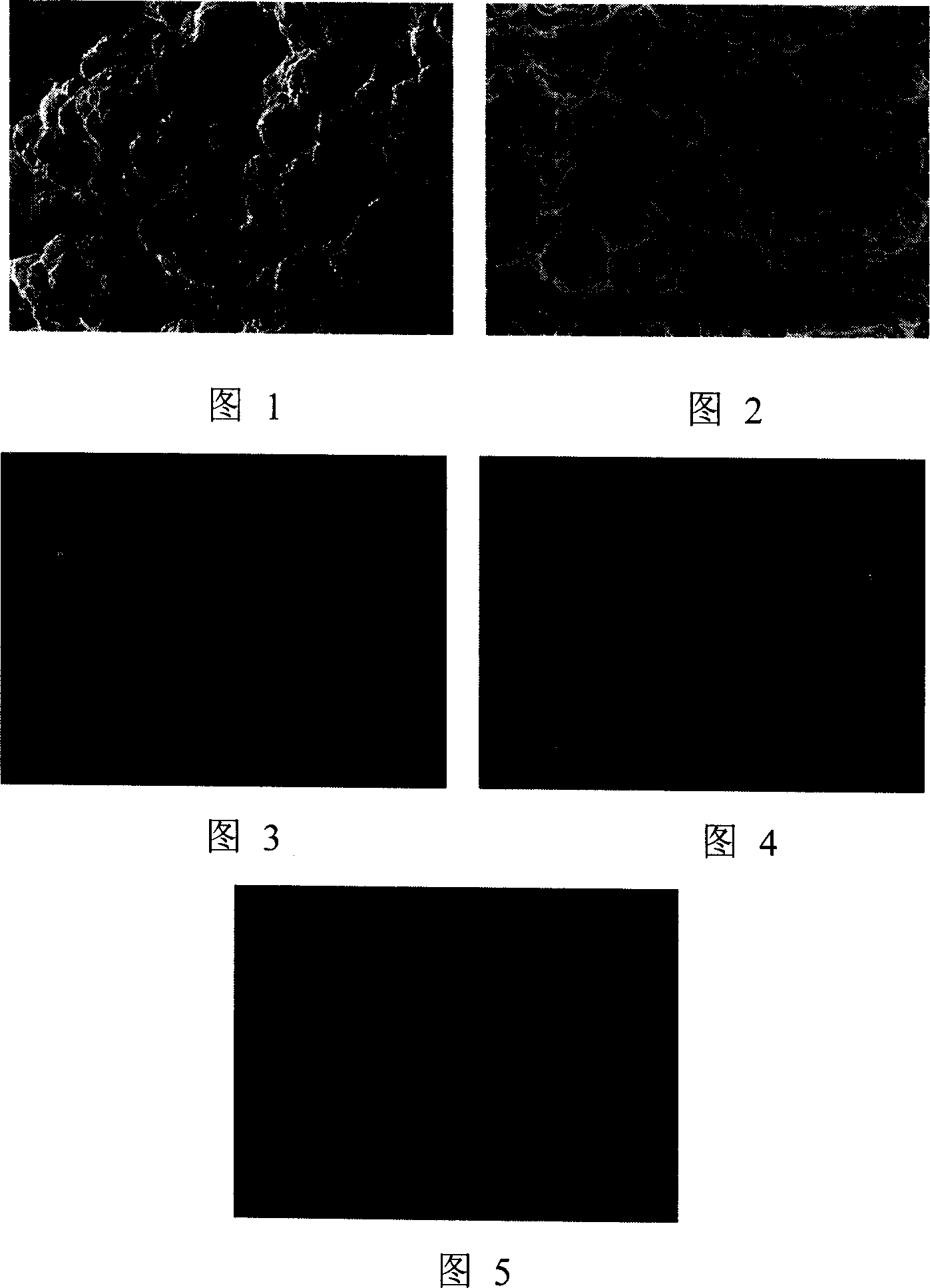A method for assembling RGD on the surface of porous pure titanium dental implant
A technology for dental implants and implants, applied in dentistry, dental implants, dental prosthetics, etc., can solve the problems of inability to maintain the shape of the implants, damage the surface of the implants, etc., and achieve the effect that is beneficial to clinical application.
- Summary
- Abstract
- Description
- Claims
- Application Information
AI Technical Summary
Problems solved by technology
Method used
Image
Examples
Embodiment 1
[0020] 1) Immerse the porous pure titanium dental implant in 0.5mg / ml PEI solution for 90 minutes, take out the implant, and put it in double distilled water for 10 minutes;
[0021] 2) Immerse the implant in NaHCO containing 0.4mg / ml RGD 3 In the solution for 12hrs, take out the implant, wash with double distilled water for 10min;
[0022] 3) Finally, immerse the implant in 0.5mg / 100ml glutaraldehyde solution for 4hrs, take out the implant, and wash with double distilled water for 10min;
[0023] 4) Finally, immerse the implant in 0.4mg / ml RGD NaHCO 3 In the solution for 24hrs, take out the implant, wash with double distilled water for 10min, and dry it for later use;
[0024] 5) Repeat the above steps 1-4 to obtain a multi-layer RGD covering layer (as shown in Figures 3-5).
Embodiment 2
[0026] 1) Immerse the porous pure titanium dental implant in 0.8mg / ml PEI solution for 60 minutes, take out the implant, and put it in double distilled water for 15 minutes;
[0027] 2) Immerse the implant in NaHCO containing 0.7mg / ml RGD 3 In the solution for 9hrs, take out the implant, wash with double distilled water for 15min;
[0028] 3) Finally, immerse the implant in 1mg / 100ml glutaraldehyde solution for 3hrs, take out the implant, and wash with double distilled water for 15min;
[0029] 4) Finally, immerse the implant in 0.7mg / ml RGD NaHCO 3 After 18 hours in the solution, the implant was taken out, washed with double distilled water for 15 minutes, and dried for later use;
[0030] 5) Repeat the above steps 1-4 to obtain a multi-layer RGD covering layer.
Embodiment 3
[0032] 1) Immerse the porous pure titanium dental implant in 1mg / ml PEI solution for 30 minutes, take out the implant, and put it in double distilled water for 20 minutes;
[0033] 2) Immerse the implant in NaHCO containing 1mg / ml RGD 3 After 6 hours in the solution, take out the implant and wash it with double distilled water for 20 minutes;
[0034] 3) Finally, immerse the implant in 1.5mg / 100ml glutaraldehyde solution for 2hrs, take out the implant, and wash with double distilled water for 20min;
[0035] 4) Finally, immerse the implant in 1mg / ml RGD NaHCO 3 After 12 hours in the solution, the implant was taken out, washed with double distilled water for 20 minutes, and dried for later use;
[0036] 5) Repeat the above steps 1-4 to obtain a multi-layer RGD covering layer.
PUM
 Login to View More
Login to View More Abstract
Description
Claims
Application Information
 Login to View More
Login to View More - R&D
- Intellectual Property
- Life Sciences
- Materials
- Tech Scout
- Unparalleled Data Quality
- Higher Quality Content
- 60% Fewer Hallucinations
Browse by: Latest US Patents, China's latest patents, Technical Efficacy Thesaurus, Application Domain, Technology Topic, Popular Technical Reports.
© 2025 PatSnap. All rights reserved.Legal|Privacy policy|Modern Slavery Act Transparency Statement|Sitemap|About US| Contact US: help@patsnap.com

